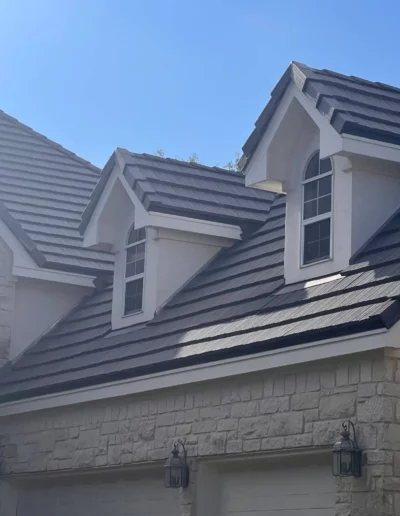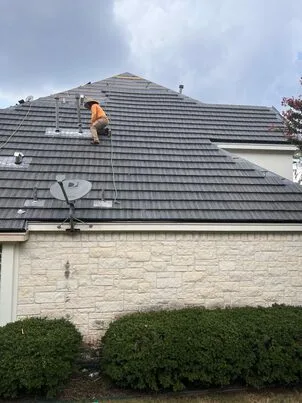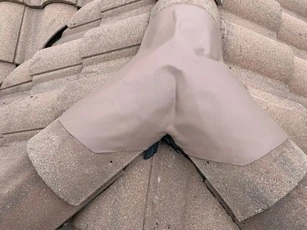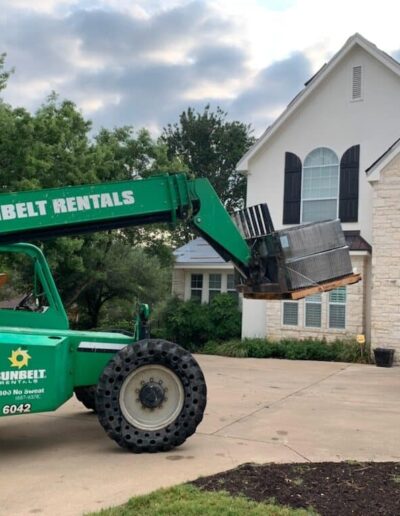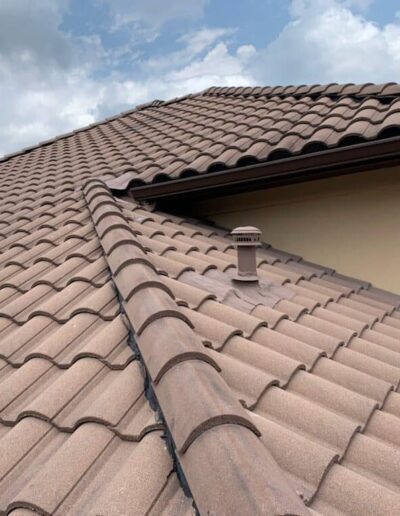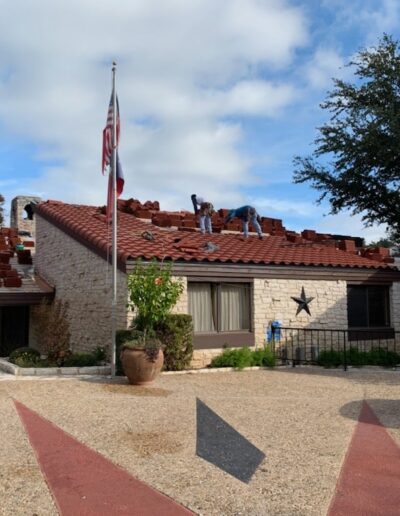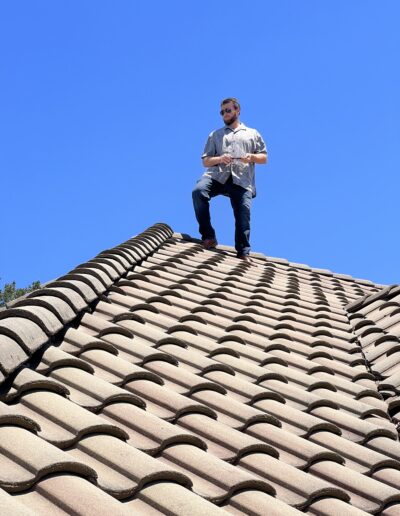Marble Falls, Texas
Roof Repair & Roof Replacement in Marble Falls, Texas
Accurate & Free Written Roof Estimates
If you’re a homeowner in Marble Falls, Texas, a Roof Specialist who offers a free written estimate can be a valuable asset. These contractors are well-versed in all aspects of roofing, including materials and installation. They can provide:
- A detailed and precise estimate.
- Taking into account the roof’s size.
- The materials required.
- Any additional labor or materials needed for the project.
Before beginning any work, the Roof Specialists will thoroughly inspect your roof to assess its condition and identify any issues that may require attention. They will also measure and evaluate the need for additional materials or labor. Once this assessment is complete, the contractor will provide a detailed written estimate covering all project costs, including materials, work, and additional services your home may require.
When working with The Roof Specialists in Marble Falls, Texas, they will offer guidance on the most suitable roofing materials for your project. They will discuss the benefits and drawbacks of different options to help you make an informed choice. Additionally, the contractor can recommend the best installation method based on the local climate and weather conditions.
The Roof Specialists can offer a warranty for the roofing project. This warranty will cover any defects in materials or craft that could happen during the installation process. Additionally, the contractor can advise on maintaining the roof and keeping it in excellent condition.
At The Roof Specialists, you can receive a complimentary written estimate outlining the total cost of your project. This estimate will cover the expenses of materials, labor, and any additional services that your roof requires. Our contractor will also suggest the most suitable roofing material for your project and guide proper installation methods. Additionally, we offer a warranty for all roofing projects and will provide helpful tips on maintaining your roof’s longevity.
Asphalt shingles are a highly favored roofing material across the United States and for a good reason. They offer excellent durability, affordability, and ease of installation, making them an ideal option for residential and commercial buildings. With various colors and styles, it’s easy to find the perfect look for your home or building. These shingles require relatively low maintenance and can last 20-30 years with proper care and upkeep.
Metal roofing is a top-rated, high-quality material with durability, energy efficiency, and longevity. It is resistant to fire, wind, and impact damage, which makes it an ideal option for regions experiencing extreme weather conditions. Additionally, it can reflect solar radiant heat, keeping the building cool during the summer. Although it’s more expensive than asphalt shingles, its long-lasting durability and low maintenance costs make it a cost-effective option in the long run.
Clay and concrete tiles are excellent choices if you’re looking for top-notch roofing materials. Made from natural materials, they have a distinct appearance that many homeowners desire. These tiles are also quite durable, with a lifespan of up to 50 years. They resist fire, wind, and impact damage and require minimal maintenance. However, it’s worth noting that clay and concrete tiles are pretty heavy, making installation a challenge. It’s crucial to ensure that your home or building’s structure can bear the weight of these tiles.
If you’re looking for a durable roofing material, synthetic slates are worth considering. These are made from plastic and rubber, but they are designed to mimic the look and texture of natural slate. One of the benefits of synthetic slates is that they are lightweight and can be easily installed, even on buildings with limited structural support. Additionally, they are resistant to fire, wind, and impact damage and require very little maintenance. Finally, synthetic slates are also more affordable than natural slates, which can be costly.
When selecting a roofing material, it’s crucial to consider your location’s climate and weather conditions and the style and appearance of your home or building. Every roofing material has pros and cons, so it’s essential to research and opt for the most suitable one.
It is crucial to hire a reputable roofing contractor of high quality for the installation of any roofing materials mentioned. Poor installation can cause leaks and other problems even with high-quality roofing material. Properly installing the material ensures its expected lifespan and proper functionality.
Choosing high-quality roofing materials is vital to protect your home or building from harsh weather while enhancing its appearance. Various roofing materials are available, each with its advantages and disadvantages. Some of the most popular and durable materials include asphalt shingles, metal roofing, clay and concrete tiles, and synthetic slates. It’s essential to conduct thorough research to determine the best material for your needs and hire a reputable and skilled contractor to ensure proper installation.

Are Shingle Roofing Materials Sustainable?
Asphalt shingles, commonly used for roofing, are not the most sustainable option. Although they are affordable and easily accessible, they do have notable environmental downsides.
Asphalt shingles have a significant drawback in that they are manufactured using petroleum, which is a non-renewable resource. Producing asphalt shingles also releases emissions that contribute to air pollution. Furthermore, the granules used for the shingle surface can wash away into water bodies and cause harm to aquatic life.
When it comes to asphalt shingles, there are a few areas that could use improvement. For one, they are less durable than other roofing materials and typically only last 15-30 years, depending on the quality and installation. This means they’ll need to be replaced more frequently than other materials, which can lead to more waste in landfills. Additionally, asphalt shingles aren’t recyclable, so once they’ve reached the end of their lifespan, they’ll also end up in landfills, contributing to the growing issue of waste disposal and pollution.
In the asphalt shingle industry, there have been recent developments towards sustainability. Certain manufacturers are creating shingles from recycled materials and recycling used shingles. Additionally, some manufacturers are producing reflective shingles that lower cooling costs by reducing the amount of heat absorbed by the building, thus decreasing energy consumption.
Asphalt shingles, a type of shingle roofing material, may not be the most environmentally friendly option available. Despite some advancements in the industry, they still possess significant environmental drawbacks compared to other materials such as metal, clay, terracotta tiles, green roofs, solar tiles or panels, slate, and recycled rubber roofing. When deciding on a roofing material, it is vital to consider factors such as environmental impact, durability, cost, and the local climate and carefully evaluate each choice’s advantages and disadvantages.
What is roofing synthetic underlayment?
If you’re looking for an extra layer of protection for your roof, consider using synthetic underlayment. This roofing material is typically made from waterproof and UV-resistant synthetic polypropylene or polyethylene. In addition to shielding your roof from the elements, it can also reduce noise from rain and hail and provide extra insulation.
A shingle roofing system is designed to make a weatherproof barrier using individual overlapping pieces of material like asphalt shingles. These shingles are commonly made of either fiberglass, asphalt, or a blend of both materials and are laid in a staggered pattern where each shingle overlaps the one below it. This overlapping pattern helps to prevent water from entering the home and ensures a waterproof barrier.
Shingles are usually installed on top of a layer of felt paper to safeguard the roof from water damage. This paper aids in keeping the shingles secure and prevents them from shifting or becoming loose. After the felt paper has been placed, roofing nails attach the shingles. The nails should be spaced at least one inch apart and driven into the roof decking.
After the shingles have been installed, a layer of roofing cement is applied to the edges. This helps to seal the edges and prevent water from infiltrating the house. In addition, the roofing cement helps keep the shingles in place and prevents them from moving or coming loose.
After the shingles have been installed, a layer of roofing tar is spread over the entire roof. This serves to seal the shingles and keep water out of the house. The roofing tar also keeps the shingles secure and prevents movement or looseness.
A layer of gravel is added to the roof to protect the shingles against the elements, preventing them from getting damaged. The stones also act as stabilizers, keeping the shingles firmly in place and preventing them from shifting or loosening.
Simply put, a shingle roofing system comprises overlapping pieces of material, like asphalt shingles, that create a barrier against water. These shingles are placed on top of a layer of felt paper and secured with roofing nails. This ensures that water is kept out of your home in Marble Falls, Texas, and that the shingles stay in their proper place.

